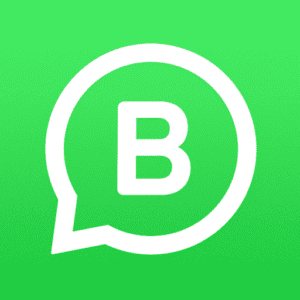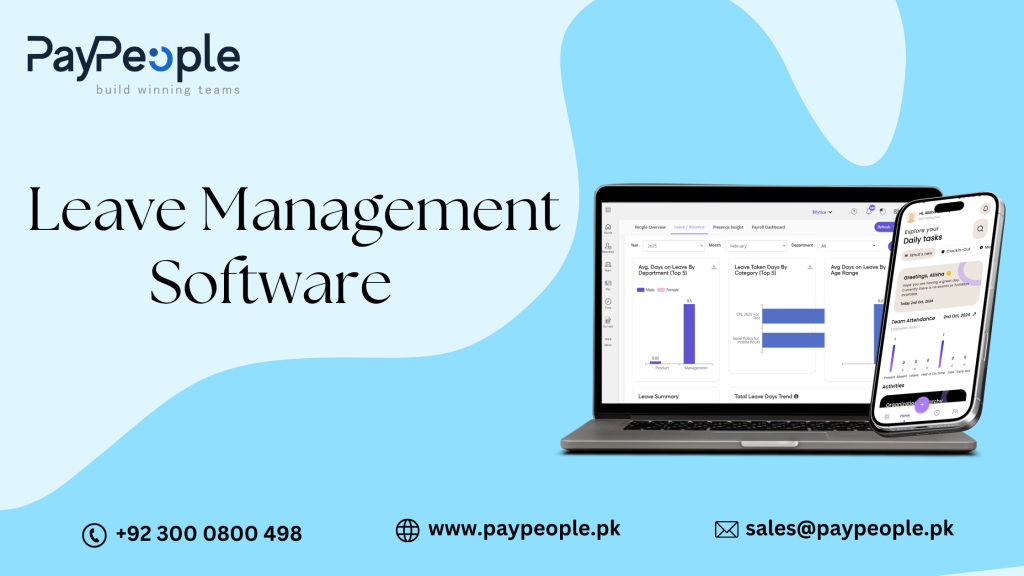Paypeople # 1 is one of the top HRMS in Islamabad The rise of remote and distributed work has revolutionized the way organizations operate. To effectively manage this evolving work landscape, Human Resource Management Systems play a crucial role. In this blog, we will explore how an HRMS can support remote and distributed workforce management, enabling organizations to optimize productivity, streamline communication, and enhance employee engagement.
Click to Start Whatsapp Chat with Sales
Call #:+923000507555
Email: sales@bilytica.com
Paypeople # 1 HRMS in Islamabad

Centralized Employee Data and Self-Service Features
An HRMS in Islamabad serves as a centralized repository of employee data, accessible to both HR professionals and employees. This centralized system eliminates the need for physical paperwork and allows remote workers to access and update their information from anywhere, anytime. Self-service features such as online leave requests, expense submissions, and performance management tools empower employees to take ownership of their tasks and facilitate efficient management of remote teams.
Remote Onboarding and Training
Bringing new employees onboard and providing them with proper training can be challenging in a remote work environment. An HRMS can support remote onboarding by digitizing the entire process, from completing paperwork to providing access to training materials. Through the HRMS, new hires can access company policies, training modules, and virtual orientations, ensuring a smooth transition into the organization and alignment with the company’s culture and values.
Time and Attendance Tracking
Tracking time and attendance is crucial for remote and distributed teams. An HRMS equipped with time-tracking features enables employees to log their work hours accurately, even from remote locations. It helps managers monitor employee productivity, track project timelines, and ensure fair compensation for employees’ efforts. Automated time-tracking systems integrated with the HRMS in Islamabad can minimize manual errors, increase transparency, and streamline payroll processes.
Collaboration and Communication Tools
Effective communication is vital for remote and distributed teams. An HRMS can integrate collaboration and communication tools, such as chat platforms, video conferencing, and project management tools, to foster seamless communication and collaboration among team members. These tools facilitate real-time interaction, file sharing, and task management, enabling teams to work together efficiently and stay connected regardless of geographical distances.

Performance Management and Feedback
Managing and evaluating employee performance is essential, even in a remote work environment. An HRMS can provide performance management features like goal setting, performance reviews, and feedback mechanisms. Through the Attendance Software in Lahore, managers can track individual and team progress, provide timely feedback, and recognize achievements. Objective performance data stored in the HRMS can support fair evaluations and help identify areas for improvement or additional training.
Employee Engagement and Wellness Programs
Remote work can sometimes lead to feelings of isolation and reduced employee engagement. An HRMS can support remote workforce management by facilitating employee engagement initiatives and wellness programs. Through the system, organizations can organize virtual team-building activities, online training sessions, and wellness challenges. HRMS analytics can also provide insights into employee engagement levels, enabling HR professionals to identify trends, address concerns, and implement strategies to enhance employee well-being.
Data Analytics and Insights
An HRMS equipped with robust data analytics capabilities can provide valuable insights into the remote and distributed workforce. HR professionals can leverage data to identify performance patterns, track employee engagement, and assess productivity levels. These insights can inform decision-making, such as resource allocation, training needs, and identifying high-potential employees. By leveraging data analytics in HR Software in Islamabad, organizations can optimize their remote workforce management strategies and drive continuous improvement.
Conclusion
As remote and distributed work becomes more prevalent, leveraging an HRMS becomes crucial for effective workforce management. By providing centralized employee data, supporting remote onboarding and training, facilitating time and attendance tracking, integrating collaboration tools, enabling performance management, fostering employee engagement, and offering data analytics insights, an HRMS empowers organizations to navigate the challenges of managing remote teams successfully. With the right HRMS in place, organizations can unlock the full potential of their remote workforce, driving productivity, fostering collaboration, and nurturing a positive employee experience in the digital age.
Click to Start Whatsapp Chat with Sales
Call #:+923000507555
Email: sales@bilytica.com
HRMS in Islamabad
HRMS in Islamabad
HRMS in Islamabad
HRMS in Islamabad
We are one of the best How HRMS in Islamabad support to manage distributed workforce? Price in Pakistan in Azad Kashmir, Bagh, Bhimber, khuiratta, Kotli, Mangla, Mirpur, Muzaffarabad, Plandri, Rawalakot, Punch, Balochistan, Amir Chah, Bazdar, Bela, Bellpat, Bagh, Burj, Chagai, Chah Sandan, Chakku, Chaman, Chhatr, updated on 2025-07-09T15:38:33+05:00 Dalbandin, Dera BugtiBarcode Shop offer lowest How HRMS in Islamabad support to manage distributed workforce? Price Face Recognition in cities Dhana Sar, Diwana, Duki, Dushi, Duzab, Gajar, Gandava, Garhi Khairo, Garruck, Ghazluna, Girdan, Gulistan, Gwadar, Gwash, Hab Chauki, Hameedabad, Harnai, Hinglaj, Hoshab, Ispikan, Jhal, Jhal Jhao, Jhatpat, Jiwani, Kalandi, Kalat, Kamararod, Kanak, Kandi, Kanpur, Kapip, KapparWe can deliver Face Recognition in Karodi, Katuri, Kharan, Khuzdar, Kikki, updated on 2025-07-09T15:38:33+05:00 Kohan, Kohlu, Korak, Lahri, Lasbela, Liari, Loralai, Mach, Mand, Manguchar, Mashki Chah, Maslti, Mastung, Mekhtar, Merui, Mianez, Murgha Kibzai, Musa Khel Bazar, Nagha Kalat, Nal, Naseerabad, Nauroz Kalat, Nur Gamma, Nushki, Nuttal, Ormara, Palantuk, Panjgur, Pasni, Piharak, Pishin, Qamruddin Karez, Qila Abdullah, Qila Ladgasht and this was updated on 2025-07-09T15:38:33+05:00
We also deal with How HRMS in Islamabad support to manage distributed workforce? Price in Qila Safed, Qila Saifullah, Quetta, Rakhni, Robat Thana, Rodkhan, Saindak, Sanjawi, Saruna, Shabaz Kalat, Shahpur, Sharam Jogizai, Shingar, Shorap, Sibi, Sonmiani, Spezand, Spintangi, Sui, Suntsar, Surab, Thalo, Tump, Turbat, Umarao, pirMahal, Uthal, Vitakri, Wadh, Washap, Wasjuk, Yakmach, Zhob, Federally Administered Northern Areas/FANAWe are already sent Face Recognition to these places – Astor, updated on 2025-07-09T15:38:33+05:00 Baramula, Hunza, Gilgit, Nagar, Skardu, Shangrila, Shandur, Federally Administered Tribal Areas/FATA, Bajaur, Hangu, Malakand, Miram Shah, Mohmand, Khyber, Kurram, North Waziristan, South Waziristan, Wana, NWFP, Abbottabad, Ayubia, Adezai, Banda Daud Shah, Bannu, Batagram, Birote, Buner, Chakdara, Charsadda, Chitral, Dargai, Darya Khan, Dera Ismail Khan and this was updated on 2025-07-09T15:38:33+05:00
we are planning to open a branch office of in Drasan, Drosh, Hangu, Haripur, Kalam, Karak, Khanaspur, Kohat, Kohistan, Lakki Marwat, Latamber, Lower Dir, Madyan, Malakand, Mansehra, Mardan, updated on 2025-07-09T15:38:33+05:00 Mastuj, Mongora, Nowshera, Paharpur, Peshawar, Saidu Sharif, Shangla, Sakesar, Swabi, Swat, Tangi, Tank, Thall, Tordher, Upper Dir, Punjab, Ahmedpur East, Ahmed Nager Chatha, Ali Pur, Arifwala, Attock, Basti Malook, BhagalchurFace Recognition in Bhalwal, Bahawalnagar, Bahawalpur, Bhaipheru, Bhakkar, Burewala, Chailianwala, Chakwal, Chichawatni, Chiniot, Chowk Azam, Chowk Sarwar Shaheed, Daska, Darya Khan, Dera Ghazi Khan, Derawar Fort, updated on 2025-07-09T15:38:33+05:00 Dhaular, Dina City, Dinga, Dipalpur, Faisalabad, Fateh Jang, Gadar, Ghakhar MandiFace Recognition How HRMS in Islamabad support to manage distributed workforce? Price s Demands very high in Gujranwala, Gujrat, Gujar Khan, Hafizabad, Haroonabad, Hasilpur, Haveli Lakha, Jampur, Jhang, Jhelum, Kalabagh, Karor Lal Esan, Kasur, Kamalia, Kamokey, Khanewal, Khanpur, Kharian, Khushab, Kot Addu, Jahania, Jalla Araain, Jauharabad, Laar, Lahore, Lalamusa, Layyah, Lodhran, Mamoori, Mandi Bahauddin, Makhdoom Aali, Mandi Warburton, Mailsi, Mian Channu, Minawala, Mianwali, Multan, Murree, Muridke, Muzaffargarh, Narowal, Okara, Renala Khurd, Rajan Pur, Pak Pattan, Panjgur and this was updated on 2025-07-09T15:38:33+05:00 and current How HRMS in Islamabad support to manage distributed workforce? Price of is Rs 100 in Pattoki, Pirmahal, Qila Didar Singh, Rabwah, Raiwind, Rajan Pur, Rahim Yar Khan, Rawalpindi, Rohri, Sadiqabad, Safdar Abad – (Dhaban Singh), Sahiwal, Sangla Hill, Samberial, Sarai Alamgir, Sargodha, Shakargarh, Shafqat Shaheed Chowk, Sheikhupura, Sialkot, Sohawa, Sooianwala, Sundar (city), Talagang, Tarbela, Takhtbai, Taxila, Toba Tek Singh, Vehari, Wah Cantonment, Wazirabad and this was updated on 2025-07-09T15:38:33+05:00
Software solutions are widely available with Price updated on 2025-07-09T15:38:33+05:00 in Sindh, Ali Bandar, Baden, Chachro, Dadu, Digri, Diplo, Dokri, Gadra, Ghanian, Ghauspur, Ghotki, Hala, Hyderabad, Islamkot, Jacobabad, Jamesabad, Jamshoro, Janghar, Jati (Mughalbhin), Jhudo, Jungshahi, Kandiaro, Lahore, Kashmor, Keti Bandar, Khairpur, updated on 2025-07-09T15:38:33+05:00 Khora, Klupro, Khokhropur, Korangi, Kotri, Kot Sarae, Larkana, Lund, Mathi, Matiari, Mehar, Mirpur Batoro, Mirpur Khas, Mirpur Sakro, updated on 2025-07-09T15:38:33+05:00 Mithi, MithaniThe Barcode Shop deliver high quality Face Recognition in updated on 2025-07-09T15:38:33+05:00 Moro, Nagar Parkar, Naushara, Naudero, Noushero Feroz, Nawabshah, Nazimabad, Naokot, Pendoo, Pokran, Qambar, Qazi Ahmad, Ranipur, Ratodero, Rohri, Saidu Sharif, Sakrand, Sanghar, Shadadkhot, Shahbandar, Shahdadpur, Shahpur Chakar, Shikarpur, Sujawal, Sukkur, Tando Adam, Tando Allahyar, Tando Bago, Tar Ahamd Rind, Thatta, Tujal, Umarkot, Veirwaro, Warah and this was updated on 2025-07-09T15:38:33+05:00
07-07-2023


